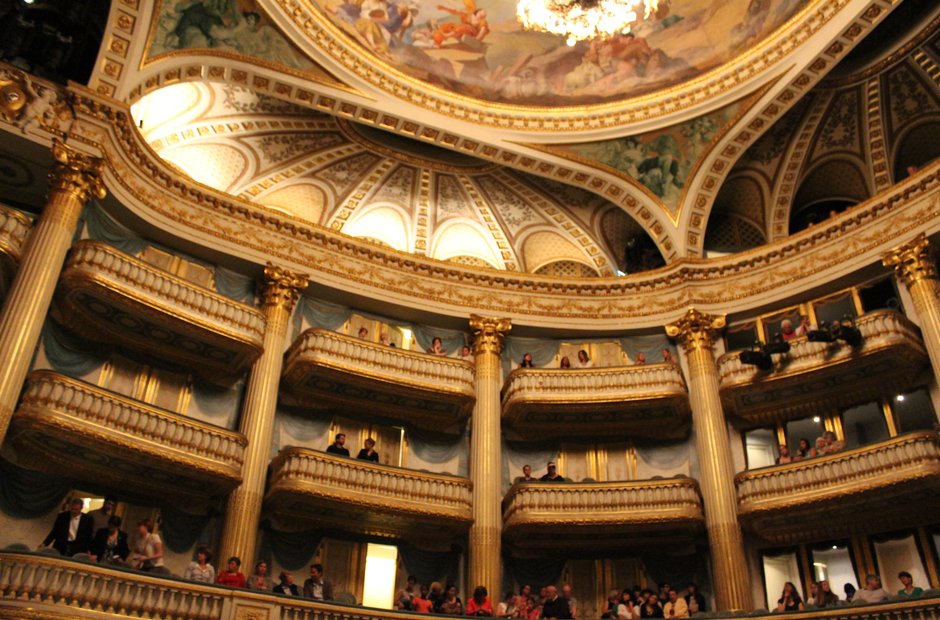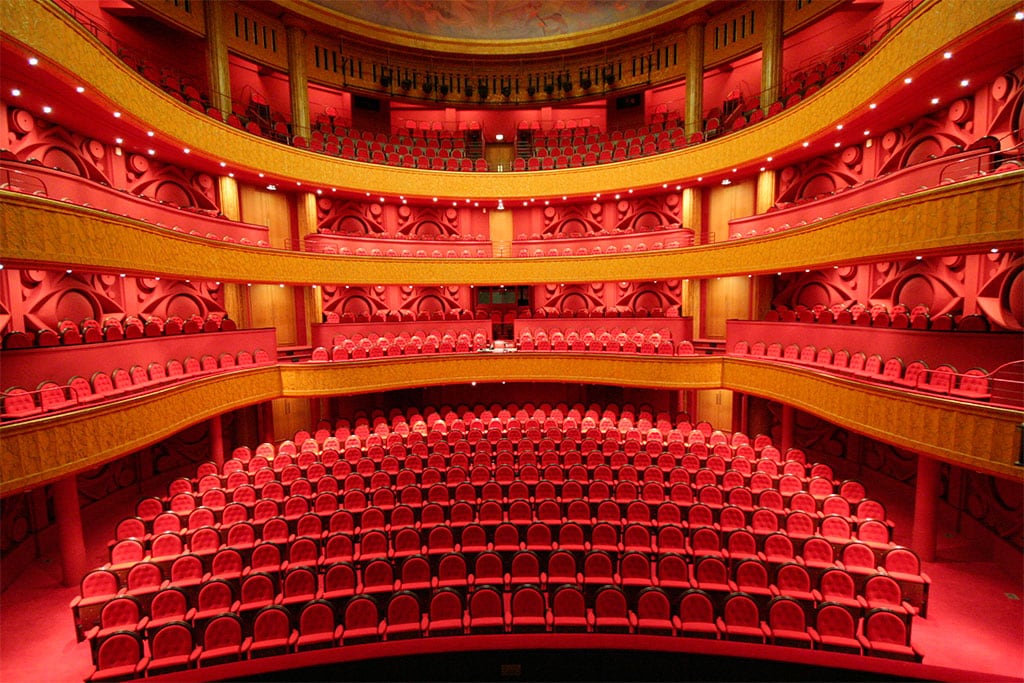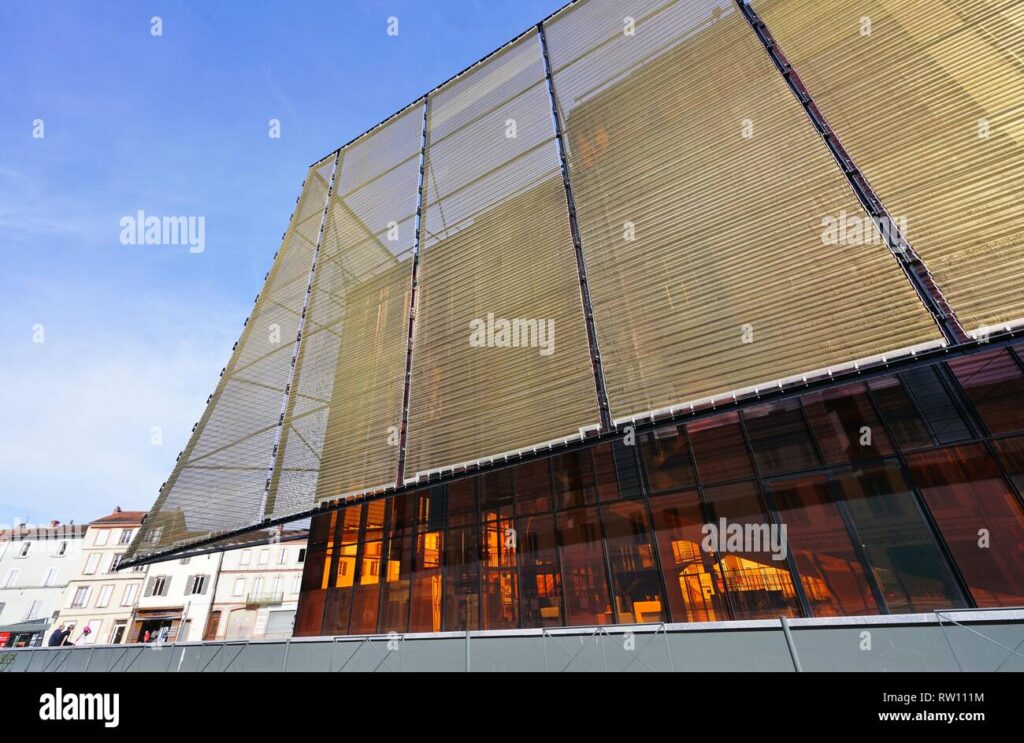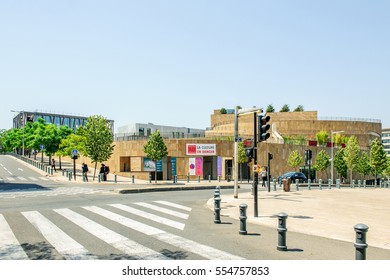Step into a world of elegance and artistry as you explore the grand theaters and performance arts of France. From the iconic Opera Garnier in Paris to the historic Theatre du Chatelet, these architectural marvels have not only housed captivating performances but also witnessed the evolution of French culture and creativity. With a rich history dating back centuries, these grand venues continue to enchant audiences with their opulent interiors, world-class productions, and the timeless allure of French theatre. Experience the magic and grandeur of the French performance arts as you embark on a journey through these captivating cultural landmarks.

History of Theater in France
Origins of French Theater
French theater has a long and rich history that dates back to ancient times. The origins of French theater can be traced back to the Roman Empire, when the Romans introduced their own style of theater to the region. This early form of theater was heavily influenced by classical Greek plays, and it laid the foundation for the development of French theater in the centuries to come.
Golden Age of French Theater
The Golden Age of French Theater is considered to be the 17th century, a time when French theater flourished and became one of the most renowned and respected in Europe. During this period, French playwrights such as Molière, Jean Racine, and Pierre Corneille produced a wealth of critically acclaimed plays that are still performed and studied today. The French court played a significant role in the promotion and support of theater during this time, with King Louis XIV himself being a passionate patron of the arts.
Theater during the French Revolution
The French Revolution in the late 18th century had a profound impact on French theater. The Revolution brought about significant changes in the social and political landscape of France, and theater reflected these changes. The revolutionary government encouraged the production of plays that promoted republican ideals and criticized the monarchy, leading to a surge in politically-charged theater. However, as the Revolution descended into violence and instability, censorship and restrictions on theater increased, stifling artistic expression.
Popular Theater Genres
Comédie-Française
The Comédie-Française is one of the most prestigious and oldest theater companies in the world. Founded in 1680, it is often referred to as the “House of Molière,” as it was originally formed by merging various theater troupes that performed the works of the famous French playwright. The Comédie-Française continues to produce both classical and contemporary plays, showcasing the best of French theatrical talent.
Boulevard Theater
Boulevard Theater emerged in the 19th century and is characterized by its lighthearted and comedic nature. This genre of theater became particularly popular among the middle class, who sought entertaining and accessible plays. Boulevard Theater often featured farce, satire, and witty dialogue, providing a form of escapism for audiences.
Opera and Ballet
Opera and ballet are intricately woven into the fabric of French theater. The Paris Opera, with its world-renowned Palais Garnier and Opéra Bastille, has been at the forefront of opera and ballet performances for centuries. French composers such as Georges Bizet, Claude Debussy, and Jules Massenet have created timeless works that continue to be performed on these grand stages.
Famous French Theaters
Palais Garnier
The Palais Garnier, also known as the Opéra Garnier, is a stunning example of French theater architecture. Built in the 19th century, it showcases the opulence and grandeur of the Second Empire style. The Palais Garnier has been the home of the Paris Opera since its opening in 1875 and continues to host world-class opera and ballet performances. Its ornate interiors, including the famous Chagall ceiling, make it a must-visit destination for theater enthusiasts.
Théâtre des Champs-Élysées
Located in Paris, the Théâtre des Champs-Élysées is renowned for its Art Deco design. The theater opened in 1913 and quickly gained fame for its avant-garde programming, showcasing innovative works of music, dance, and theater. It has hosted performances by renowned artists such as Igor Stravinsky and Vaslav Nijinsky, cementing its place as a hub for artistic experimentation.
Opéra Bastille
The Opéra Bastille, located in the Bastille district of Paris, is a modern and contemporary theater that was inaugurated in 1989. Designed to accommodate larger productions and modern staging techniques, it has become a vibrant venue for opera and ballet performances. The Opéra Bastille’s architectural design emphasizes accessibility and inclusivity, making it an important symbol of France’s commitment to the arts.
Architecture of Grand Theaters
Distinctive Features of French Theater Architecture
French theater architecture is characterized by its elegance, grandeur, and attention to detail. The theaters often feature ornate facades, meticulous interior decorations, and exquisite finishes. The use of different architectural styles, such as the Second Empire style in Palais Garnier and the Art Deco style in Théâtre des Champs-Élysées, contributes to the unique identity of each theater.
Design and Structure of Palais Garnier
The Palais Garnier’s design incorporates elements from various architectural periods, including baroque and neo-classical styles. Its iconic facade, adorned with sculptures and intricate details, captivates visitors from the moment they approach the theater. Inside, the auditorium boasts plush velvet seating, gilded balconies, and a sprawling chandelier, creating a truly breathtaking experience for theatergoers.
Modern Innovations in Theater Architecture
While French theater architecture has a rich tradition, modern innovations have also left a mark on the landscape. The Opéra Bastille, with its contemporary design and technical capabilities, reflects the evolution of theater architecture. The integration of advanced stage technologies, flexible performance spaces, and enhanced acoustics ensures that these grand theaters continue to provide optimal experiences for both artists and audiences.

Celebrated French Playwrights
Molière
Molière is without a doubt one of the most renowned French playwrights in history. Born Jean-Baptiste Poquelin in 1622, he is known for his comedies that tackled societal issues and human foibles with wit and satire. His works, such as “Tartuffe” and “The Misanthrope,” are considered classics of French literature and continue to be performed worldwide. Molière’s innovative use of language and his ability to blend comedy with social commentary have cemented his status as a master of French theater.
Jean Racine
Jean Racine, a contemporary of Molière, was a prominent figure in French neoclassical tragedy. His plays, including “Phèdre” and “Andromaque,” are known for their exploration of human passions, complex characters, and poetic language. Racine’s tragedies delve into themes of love, power, and morality, and his works continue to be studied for their profound emotional depth and linguistic beauty.
Victor Hugo
Victor Hugo is a towering figure in French literature and his impact on the world of theater is undeniable. Best known for his novels such as “Les Misérables” and “The Hunchback of Notre-Dame,” Hugo also wrote several plays. His most famous play, “Hernani,” sparked controversy and revolutionized French theater with its departure from traditional dramatic norms. Hugo’s powerful storytelling and his ability to shed light on social injustices influenced generations of playwrights and cemented his place in the pantheon of French theater.
The International Influence of French Theater
Spread of French Theater to Europe
French theater has had a profound influence on the development of theater in Europe and beyond. During the 17th and 18th centuries, French plays were widely performed and imitated across Europe, with French actors and theater troupes touring extensively. The French language and style of theater became synonymous with refinement, elegance, and sophistication, shaping the theatrical traditions of many countries.
French Plays in Translation
French theater’s impact extends beyond language barriers, as many French plays have been translated and performed in various languages around the world. The universal themes and compelling narratives found in the works of Molière, Racine, and other French playwrights resonate with audiences, transcending cultural boundaries. These translations allow theater enthusiasts worldwide to experience the beauty and brilliance of French theater.
Impact of French Theater on Modern Drama
French theater continues to shape and inspire modern drama. The innovative techniques, daring subject matter, and psychological depth found in the works of French playwrights have paved the way for new theatrical movements and genres. The absurdist and existentialist philosophies of Jean-Paul Sartre and Albert Camus, for example, owe much to the groundbreaking work of previous French playwrights. The legacy of French theater can also be seen in the works of contemporary playwrights who continue to push the boundaries of form and content.

Performance Arts and Circuses in France
Cirque du Soleil
While theater plays a significant role in the performance arts scene in France, circuses also have a rich history in the country. Cirque du Soleil, the internationally acclaimed contemporary circus troupe, was founded in Québec, Canada, by two former street performers. The unique combination of acrobatics, music, and storytelling has captivated audiences worldwide, and the troupe has become a fixture in French theater and performance arts.
Pantomime
Pantomime, or “mime,” has a long tradition in French performance arts. Dating back to ancient Greece and Rome, pantomime is a form of silent storytelling that relies on physical gestures, facial expressions, and body movements to convey emotions and narratives. French mime artists such as Marcel Marceau and Etienne Decroux have greatly contributed to the popularity and recognition of pantomime as an art form in France and beyond.
Cabaret Shows
Cabaret shows have also played a significant role in French performance arts. Cabarets, such as the iconic Moulin Rouge in Paris, offer a unique blend of theater, music, dance, and comedy. These shows showcase a wide range of talent and provide a platform for artists to express themselves in an intimate and entertaining setting. Cabaret shows have become synonymous with the vibrant nightlife and artistic culture of France.
Prominent French Actors and Actresses
Sarah Bernhardt
Sarah Bernhardt, often referred to as “the Divine Sarah,” was a legendary French stage actress who achieved worldwide fame in the late 19th and early 20th centuries. Known for her powerful and emotional performances, as well as her extravagant lifestyle, Bernhardt became an icon of French theater. Her portrayals of tragic heroines, such as Marguerite Gautier in “La Dame aux Camélias,” left a lasting impression on audiences and critics alike.
Gérard Depardieu
Gérard Depardieu is one of the most respected and celebrated actors in French cinema and theater. With a career spanning over five decades, he has garnered numerous accolades for his versatile performances. Depardieu’s commanding stage presence and ability to embody complex characters have made him a sought-after talent in both French and international productions.
Isabelle Adjani
Isabelle Adjani is a French actress known for her intense and captivating performances. She has been widely recognized for her contributions to French theater, film, and television. Adjani’s ability to convey a wide range of emotions and her dedication to her craft have made her one of the most revered actresses of her generation. Her stage work, including her portrayal of iconic characters such as Joan of Arc, has solidified her place in the pantheon of French acting talent.

French Theater Festivals
Festival d’Avignon
The Festival d’Avignon is one of the most prestigious and influential theater festivals in the world. Established in 1947, it is held annually in the historic city of Avignon and attracts theater enthusiasts, artists, and industry professionals from around the globe. The festival showcases a diverse range of performances, including classic plays, avant-garde productions, and experimental theater, contributing to the vibrancy and innovation of French theater.
Festival de Cannes
While primarily known for its focus on cinema, the Festival de Cannes also celebrates the art of theater. As part of the festival, the Palais des Festivals et des Congrès in Cannes hosts theatrical performances that showcase the talent and creativity of French and international theater companies. The festival provides a platform for emerging artists and established professionals to present their work to a global audience.
International Theater Festival of Nancy
The International Theater Festival of Nancy, held in the city of Nancy, is renowned for its dedication to promoting contemporary and experimental theater. Established in 1963, the festival has become a hub for innovative performances that push the boundaries of traditional theatrical conventions. It attracts a wide range of theater companies, artists, and spectators, fostering creativity and dialogue within the French and international theater community.
The Relevance and Continuity of French Theater
Revitalization of Traditional Theater Practices
While French theater has a rich past, it continues to evolve and adapt to the changing cultural landscape. Theater companies and artists in France are increasingly embracing and revitalizing traditional theater practices, such as Commedia dell’arte and classical French plays. This resurgence ensures that these timeless forms of theater are preserved and celebrated by new generations.
Experimental and Avant-Garde Theater
French theater also embraces experimentation and avant-garde approaches. Many theater companies and artists in France are at the forefront of innovative theatrical techniques and narrative structures, challenging traditional notions of performance and storytelling. This spirit of experimentation pushes the boundaries of theater and keeps the art form relevant and exciting for both artists and audiences.
Preservation of French Classical Theater
The preservation of French classical theater remains a priority in France. Institutions like the Comédie-Française and the Paris Opera continue to champion and perform the works of Molière, Racine, and other esteemed playwrights. By preserving and honoring these classics, French theater ensures the continuity of its rich cultural heritage while also inspiring future generations of theater makers.
French theater, with its illustrious history, diverse genres, and world-renowned theaters, continues to captivate and inspire audiences worldwide. Its timeless plays, talented actors, and innovative productions are a testament to the enduring relevance and spirit of this beloved art form. Whether through classic tragedies, contemporary avant-garde performances, or grand opera spectacles, French theater continues to push boundaries, challenge conventions, and leave an indelible mark on the global stage.

